February 4, 2013, marked 100 years since the first organization for research in the field of plant protection has been established in the Baltic Region.
On February 4, 1913, the Ministry of Agriculture ratified Articles of Association of Baltic Pest Control Station of Agricultural Crops. Jānis Bickis, lecturer of Priekuļi agricultural school, was nominated Head of the research station. His contribution to the foundation of the first plant protection research institution in Latvia and the whole Baltic region is inestimable.
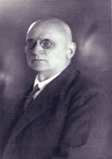 |
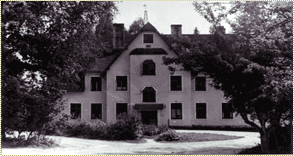 |
| Jānis Bickis (1877. – 1933.) | One room was assigned to Baltic Pest Control Station of Agricultural Crops in the Baltic Agricultural experimental Station main building, where it remained until 1921. |
The articles of association defined the main assignments of the research station:
- detailed research of the crop pests of both plant and animal origin;
- scientific and practical development of controlling methods thereof;
- assisting the communities in the Baltic region in pest control through all – round dissemination of knowledge on the existing pests and their control.
On November 10, 1913 the RLC meeting passed a decision on replacing the name of the station with Baltic Bio-Entomological Station. Already on the second year of operation of the Station, trial plots were set up to carry out targeted research studies on different pests and diseases, their controlling and eradication methods.
As the Station had always regarded the information of the general public on harmful organisms and on their control methods as an assignment of maximum importance, on June 1, 1922, the LLC headquarters were transferred, 4a Baznīcas iela, in Riga, a house which was property of the Station. The Station was renamed Bio-Entomological and phytopathological Station. Phytopathologist Maksis Eglītis was leader of Station. An up-to-date research laboratory was also set up there and equipped with a thermostat, autoclave, microtome, binocular microscope and other implements, fixing up premises for the studies of the pest development cycles in laboratory conditions, as well as a camera for multiplication of the fungi disease agents. At the same time, the department conducting almost all field trials remained in Priekuļi.
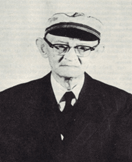 |
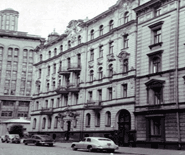 |
| Maksis Eglītis (1892. – 1974.) | Bio-Entomological and phytopathological Station building on Baznīcas iela 4a. |
With expansion of the scope and role of the Station, a decision was taken by LLC in 1923 to rename it Plant Protection Institute.
The opening of Plant Protection Museum under the auspices of the Institute on February 26, 1926, in Riga should be noted as an exceptionally outstanding event. Its main purpose was education extension through providing answers to farmers and other interested parties on the causes of damages incurred by plants and their diseases as well as controlling measures thereof.
In 1929, as the result of another managerial staff shift, M. Eglītis was replaced by his former assistant, entomologist E. Ozols to the post of director of the station.
The beginning of the decade of 1930 was marked with several outstanding events for the Plant Protection Institute. It was conferred a national status in 1930, when, pursuant to the Board decision, the institution was renamed Plant Protection Institute of Latvia. Writings of Latvian Plant Protection Institute – Acta institutide fensionis plantarum Latviensis – started to be issued. The institute took up international cooperation with scientists from abroad.
The year 1933 brought historical changes causing an important impact on the future operations of the institute. For concentration of the activities of the institute, the LLC Board took a decision on purchase of a land parcel in Riga for the purposes of the trial plots and building of a laboratory (with a hot house attached). The Municipality obliged by allocating about 3300 m2 of land at Lielvārdes iela in hereditary lease. In 1934, the construction of the Latvian Plant Protection Institute laboratory was completed. Through purchase of the adjacent parcel of land, the trial plot area was also successfully enlarged to 4773.5 m2. In spring of 1935, the laboratory moved from Baznīcas iela to the new premises; subsequently the department in Priekuļi was closed too.
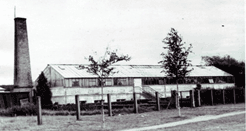 |
| Laboratory building on Lielvārdes iela, 1935. |
November 13, 1948 became a crucial point in the life of Institute when it was incorporated in the system of the All – Union Research Institute (VAAZPI) and renamed VAAZPI Baltic Plant Protection Station.
In 1959, the Station was moved to more spacious premises: a larger two-story building was commissioned at Lielvārdes iela 36/38. There was the Station until March 2011. In 1960, K. Davidenko was instituted director of the station.
 |
| Building on Lielvārdes iela 36/38, 1959. |
As from April 25, 1964, the Station was reorganized into the Baltic Affiliation of VAAZPI. At that time, the thematic scope of research was expanded once more: fungi caused diseases of different crop plants, entomology, biomethods, weed control, and toxicology.
On September 6, 1991, the Institution became the government surveillance institution again and was renamed the Latvian State Plant Protection Centre (LSCPP). The work of the institution was mainly oriented to biological efficiency evaluation and registration of the new plant protection products in Latvia. LSCPP undertook research also within the grant scheme run by Latvian Research Council. Research was conducted on weed distribution in areas under crops and the soil of Vidzeme region. A large step forward was made in development of disease forecast systems and recording methods for potato and apple-tree pests and diseases which resulted in development of the integrated systems for control of the harmful organisms.
On December 17, 2004, the state limited liability company “Latvian Plant Protection Research Centre” (LPPRC) was entered into the Commercial Register of Latvia.
In September of 2010, due to the shift of shareholders, LPPRC became the property of Latvia University of Agriculture yet preserving status of a legally independent unit – a limited liability company “Latvian Plant Protection Research Centre.”
Currently, scientific research is organized in 4 groups:
- Weed research group (leader of the group Zane Erdmane M.sc.biol.)
- Horticultural crop pathology group (leader of the group Regīna Rancāne M.sc.agr.)
- Field crop pathology group (leader of the group Olga Treikale Dr.biol.)
- Entomology group (leader of the group Laura Ozoliņa – Pole M.sc.biol.)


